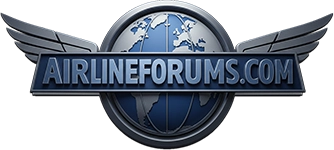Perhaps the east pilots should emphasize how the west pilots wanted DOH for the ATA pilots. Would that be equivalent?
Maybe you can explain where you are trying to take this "point". As I recall, the AWA & ATA MEC's held informal discusions in an attempt to make any possible merger proceed as smoothly as possible. Informal, because no merger was announced. The AWA MEC received some degree of critisizm from their constituents because they had informally agreed to the "concept" of DOH with restrictions in this particular case. I'm certain that if ATA had any pilots on furlough at that time, adding them to the bottom of the newly merged list would have been one of the restrictions. I believe that their arguement was based on the fact that ATA was a much smaller airline and that a DOH merger of the two groups of "working" pilots would also closely resemble a ratioed merger; the start-up and various expansion dates of the two airlines were very similar. It was also a fundamental belief among the two groups that it was important to make as fair as possible the list, so that the two groups could truely join as one and advance everyone's cause...something that is lost on USAPA. It should be noted that DOH was probably seen as a negative by most AWA pilots (and a big YAHOO, by most ATA pilots), but the overall positives of growth and pilot unity made it worthwhile.
Some of the various start-up and growth timelines are noted below.
Wikpedia:
ATA
ATA was established in August 1973 as American Trans Air (ATA) to provide aircraft for the Ambassadair travel club. Its first aircraft was a Boeing 720 named "Miss Indy", with a second Boeing 720 ("Spirit of Indiana") being added in 1978. ATA received its common-air carrier certificate in March 1981. Operations started as a charter carrier in 1981, with a fleet of eight Boeing 707s based in Indianapolis, Indiana. In 1983, American Trans Air introduced its first DC-10, a series -10, and was followed in 1984 by another, a series -40. Amtran, Inc., was founded by owner J. George Mikelsons in 1984, as the holding company for Ambassadair, ATA, and any future subsidiaries.
The airline replaced the 707s with Boeing 727-100 trijets in 1984, and added Rolls-Royce powered Lockheed L-1011s (most of which were ex-Delta Air Lines and TWA) in 1985, and Boeing 757-200s in 1989. Scheduled service flights began in 1986 between Indianapolis, Indiana (Indianapolis International Airport) and Fort Myers, Florida (Southwest Florida International Airport).
AWA
One of the 1980s' greatest business success stories,
the airline was established in February 1981 and started on August 1, 1983 using three leased Boeing 737 aircraft flying out of their base in Phoenix, Arizona with Ed Beauvais as CEO.[2] At the start, passengers could buy tickets on board the aircraft.
In 1985, America West had grown to the point that no more gate space was available at Sky Harbor International Airport. While the new Terminal 4 at Sky Harbor was approved in 1986, it became apparent that additional gates would be needed before Terminal 4 was completed, and a temporary concourse was added to the southwest corner of the Airport's Terminal 3, adding six gates (eventually a total of 11 gates by 1990) for the use of America West.
The airline's rapid growth continued in 1986, with the airline greatly expanding its fleet, primarily with Boeing 757s purchased from Northwest Airlines after Northwest bought out Republic Airlines, as well as the acquisition of a number of De Havilland Canada Dash 8 aircraft for local service from Phoenix and Las Vegas.
As 1989 opened the airline explored destinations beyond the United States, America West filed with Department of Transportation for a Phoenix to Sydney route, to connect with now defunct Ansett Airlines. However the proposal was rejected and the Reagan Administration awarded the route to another airline.
In 1989, the airline leased four Boeing 747 aircraft (formerly operated by KLM), offering service to Hawaii and Nagoya, Japan, as well as an expansion of service to many Mexican destinations.


